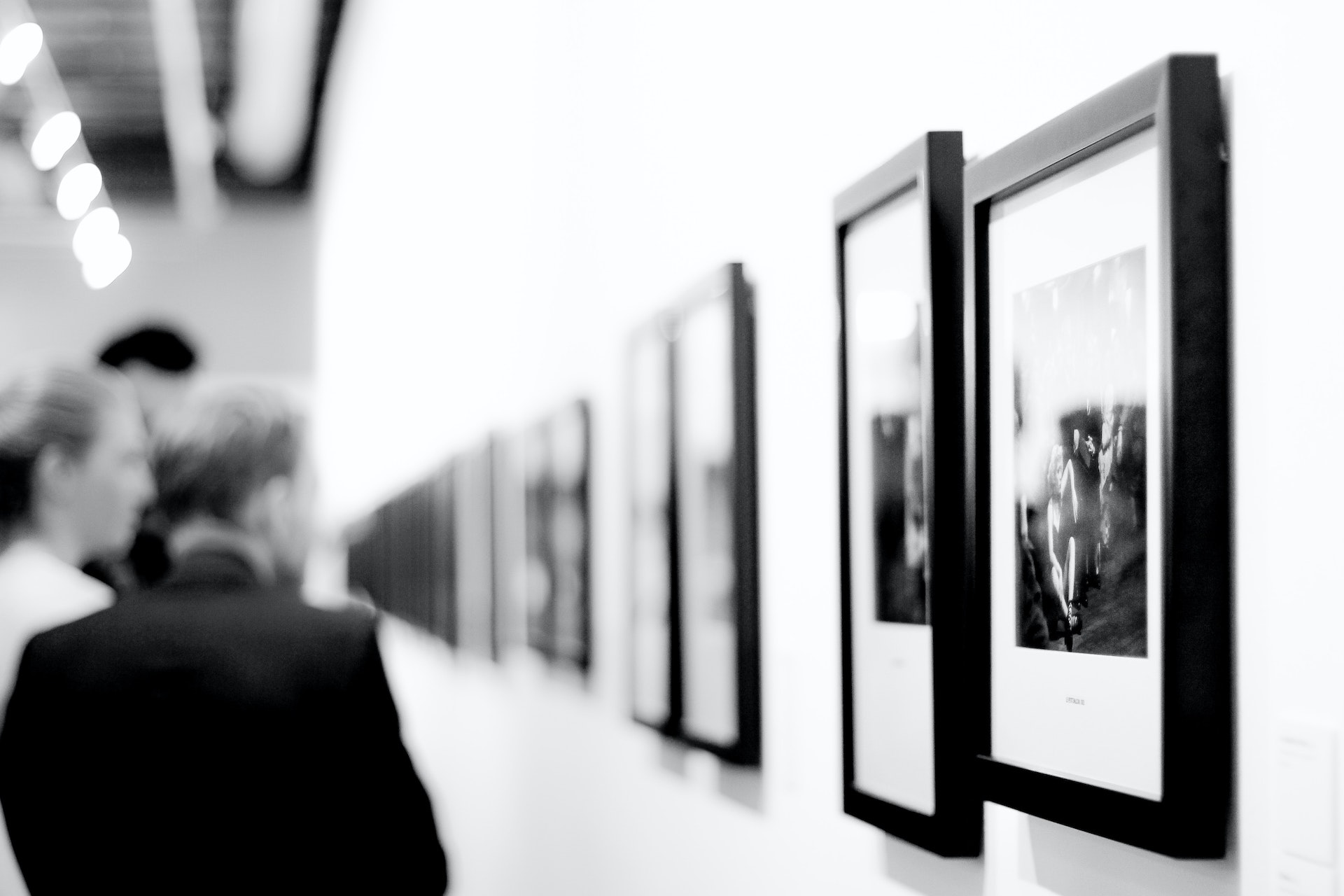 The art world has become a more inclusive, engaging place for newcomers and connoisseurs alike — and we owe technology much of the credit. From machine learning and personalization to augmented reality and blockchain integrations, new technologies continue to reshape and reimagine what the art world can be and who has access to it.
The art world has become a more inclusive, engaging place for newcomers and connoisseurs alike — and we owe technology much of the credit. From machine learning and personalization to augmented reality and blockchain integrations, new technologies continue to reshape and reimagine what the art world can be and who has access to it.
Many people still believe consumers won’t buy art without experiencing it in-person. Online art galleries are flourishing, however, and new tools make it easier than ever for potential buyers to get up close and personal with works of art that could be thousands of miles away. Thanks to new tech, the experiential moments that used to happen only in physical galleries now occur in living rooms and on computer screens all around the world.
Of course the worldwide coronavirus pandemic has made these more inclusive, more accessible art experiences even more essential. Even people who regularly visit brick-and-mortar galleries now find themselves in need of alternative forms of engagement. Online art galleries and new technologies allow art lovers of all experience levels to enjoy and acquire art no matter what the state of the outside world.
As senior vice president and general manager at Saatchi Art, I’ve had a front-row seat for the digital transformation sweeping through the art world. People who never considered purchasing original art have now become regular collectors. And traditionalists who have generally stayed away from advanced tech are embracing new tools and getting excited about what the future has in store. Thanks to innovation and open minds, the global democratization of art has truly begun.
Six technologies in particular have already started to change the space, and we’ll continue to see the outsized impact in this evolution: augmented and virtual reality, machine learning and personalization, artificial intelligence, and blockchain.
Augmented and Virtual Reality
AR and VR have already begun to reshape the art world and, in some cases, art itself.
Museums and galleries now leverage AR inside their spaces to provide context about works on display or to add dynamic, interactive elements to their visitor tours. On a larger level, AR can even make fine art more accessible to global audiences. For example, last year Apple launched a beautiful experiential collaboration with the New Museum to create free art walk experiences in seven major cities.
And of course, VR allows museum and gallery visitors to be completely immersed in an artist’s work or an exhibition. Just last year, the Louvre launched “Mona Lisa: Beyond the Glass,” a VR experience that allows visitors to discover the painting in a new way—from the texture of the painting, usually hidden behind glass, to the way in which it has aged over time. Can’t make it to the Louvre? The museum, like many others today, offers virtual tours of exhibitions, so art enthusiasts around the world can experience the iconic institution without ever leaving their homes.
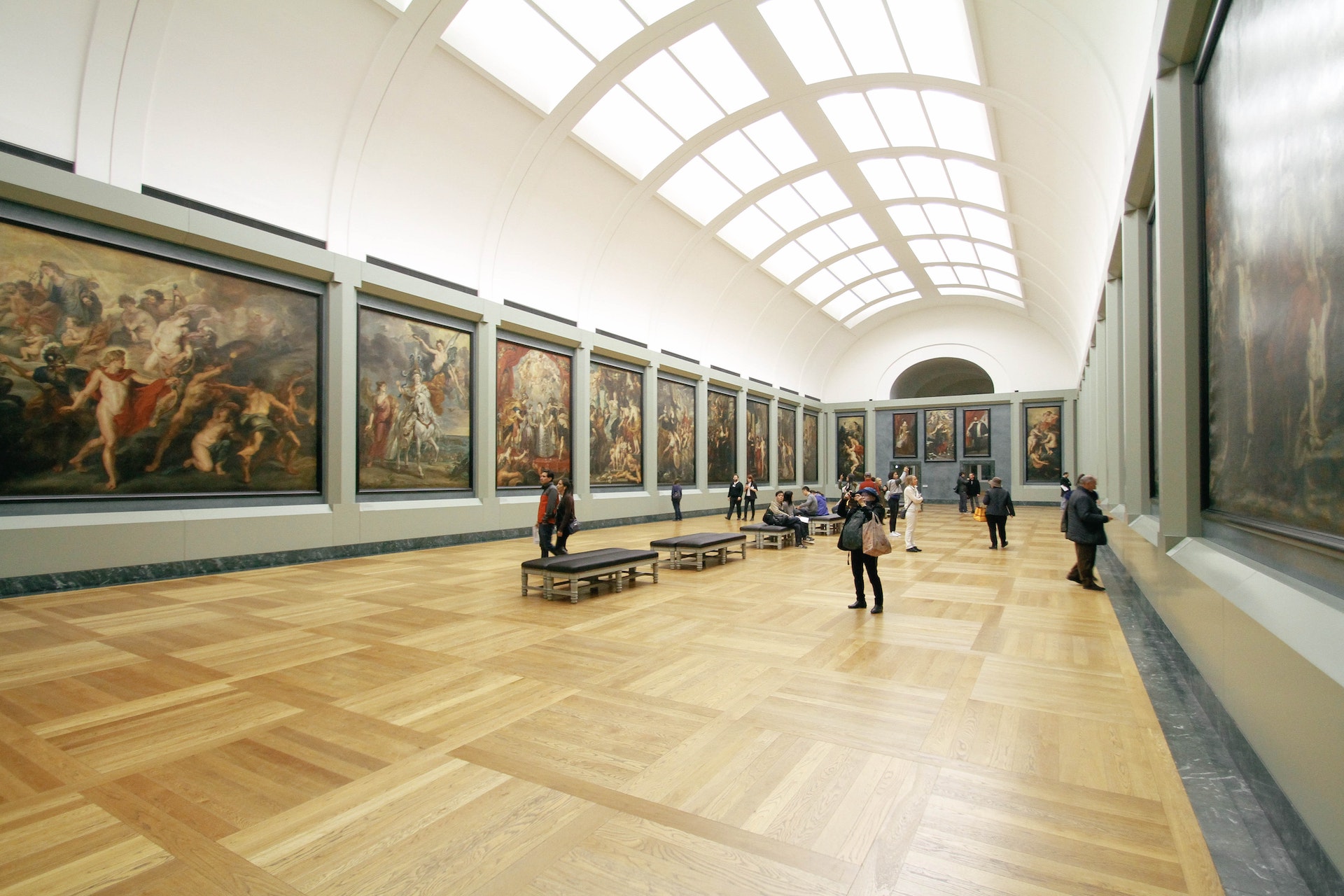
From Jordan Wolfson to Marina Abramović, contemporary artists have already begun to use VR and AR to create new artwork and digitally interactive spaces. This untapped medium should excite art lovers for its rich potential to tell new stories and extend artists’ abilities to explore their creativity beyond the confines of the white-wall gallery space.
Today art buyers can already take advantage of AR capabilities to get closer to works they’d like to purchase. Saatchi Art’s iOS app has an AR feature that lets users see what works of art would look like in their own homes instantly, and to-scale, on their mobile phones. It’s an incredibly satisfying experience that helps us sell artwork every day.
Several galleries and museums already offer virtual and augmented reality tours. Because shelter-in-place orders have forced most institutions to close indefinitely, many of the world’s greatest collections have opened their virtual doors to the public. Art lovers can experience the Egyptian antiquities collection at the Louvre, tour the interior of the Vatican, and explore the entirety of the Guggenheim’s contemporary collection from the comfort of their quarantined homes.
Ultimately as we come out of this pandemic crisis with a new appreciation for all that technology can do, and as AR and VR become cheaper and easier to implement, more museums and art businesses will take advantage of these technologies and will offer deeper, richer online and virtual experiences as a regular part of the gallery experience from here forward.
Machine Learning and Personalization
Just as Amazon and Facebook use machine learning and behavioral data to suggest more appealing products and content, online galleries are exploring ways to leverage data to improve recommendations suited to buyers’ tastes.
Foundationally, it must be said that art remains a highly subjective, personal, and emotional purchase, which means data alone may never fully meet the demands of modern art buyers. However, at Saatchi Art, we are discovering we can remedy this issue to a certain extent by integrating our curators’ custom collections into our machine learning recommendations. The result offers our visitors not only potential artwork they’ll like based on past browsing behavior, but more nuanced choices that might surprise and delight our customers on an emotional level.
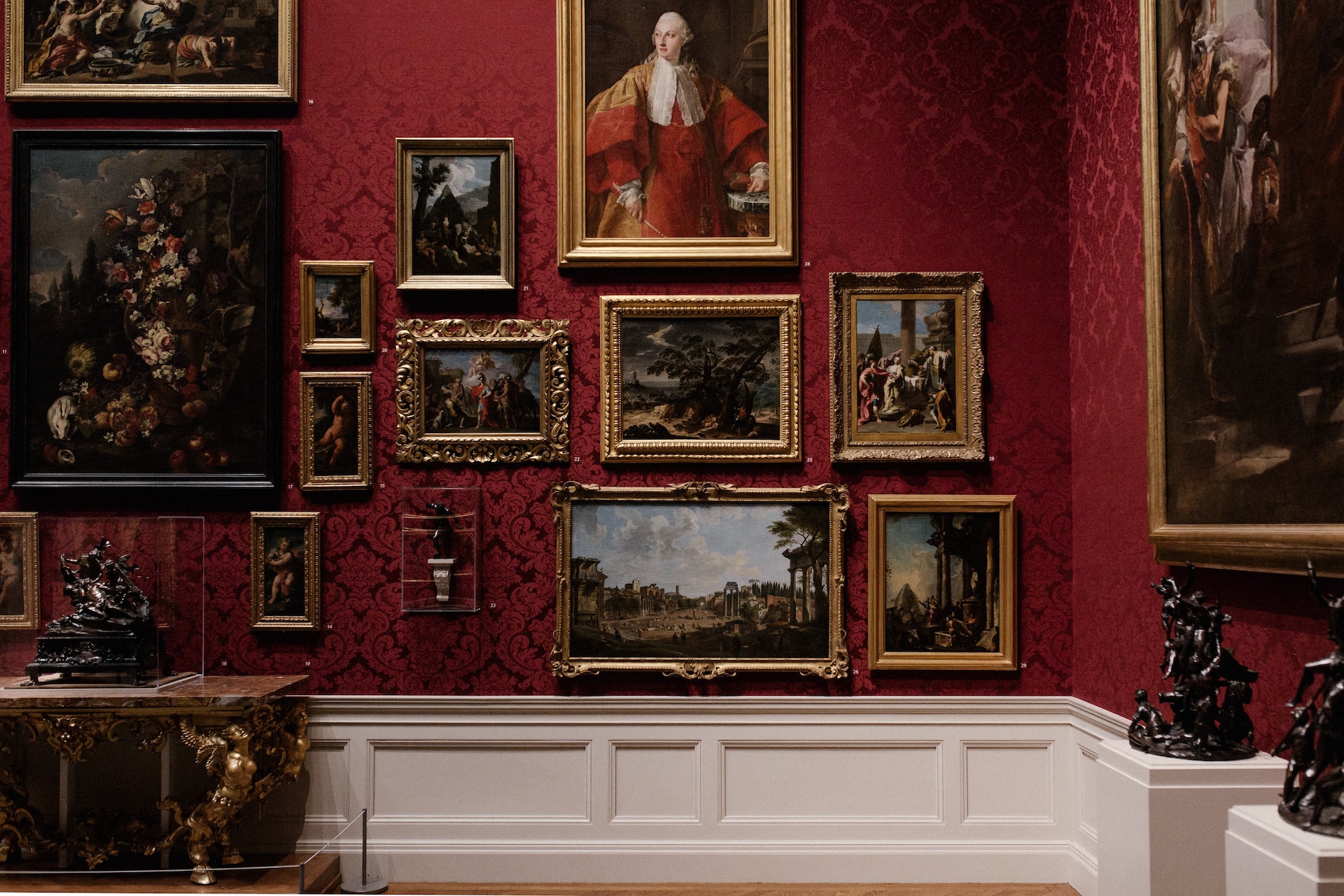
Smarter personalization leads to content tailored to the individual experience from beginning to end. In some cases, the content itself changes to reflect the tastes of the person experiencing it. Netflix recently experimented with interactive content, but the company has leaned on personalized categories and recommendations to engage its users for years.
It’s not hard to imagine similar strategies being utilized in the art world: art viewers may soon experience the same works differently based on the technical capabilities of the galleries or artists presenting them. Tokyo’s popular digital museum teamLAB Borderless offers a compelling example of how viewing art can become a totally interactive and personalized experience for each viewer.
Artificial Intelligence
Artificial intelligence represents one of the most exciting steps forward for art creation and curation. The more intelligent machines become, the more artists and galleries will test the limits of what AI-powered tools can do.
Artists have used technology to create their works for many years. From Laura Owens to Jeff Koons, blue chip contemporary artists readily embrace advancements that can help them turn their creative visions into reality. For some artists, however, AI assistance is just the beginning.
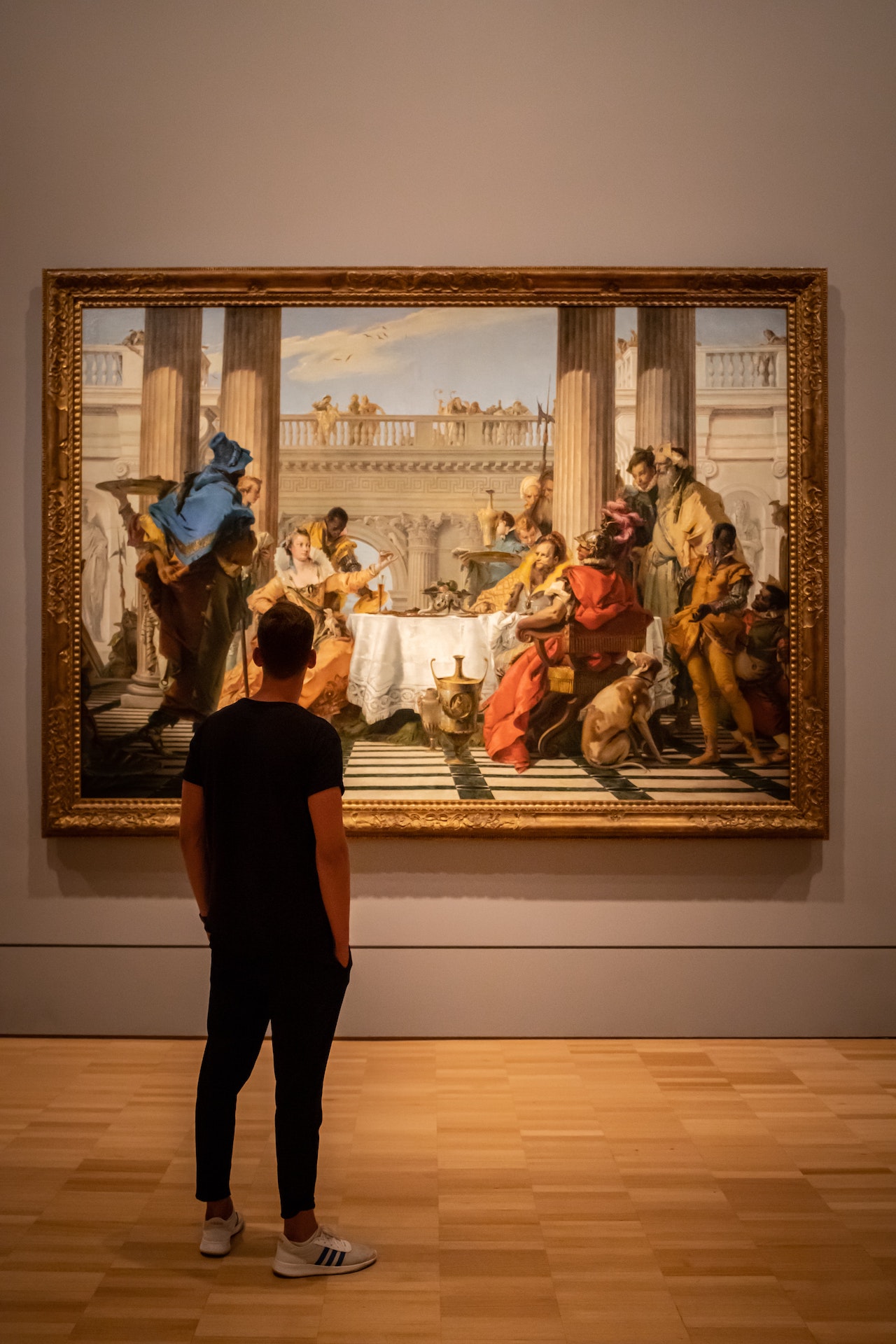
Christie’s recently sold its first piece of auctioned AI art — a blurred face titled “Portrait of Edmond Belamy” — for $432,500. This event raises several questions for the artistic community. What will AI do to push the definition of art in the future? Who should get the credit for a work like the one sold at Christie’s? The machine, the people who created the machine, and the people who created the works interpreted by the machine all have a case. The art world will have to contend with these questions in the years ahead.
Coronavirus quarantines have created audiences hungry for any form of novel home-based entertainment. Some of those people have discovered AI Gahaku, a Tokyo-based AI artist that creates works of art based on the faces of people who submit their selfies.
Creating art from selfies is exciting, but most of the real benefits of AI happen behind the scenes. Boring AI, as some would call it, empowers researchers, professionals, and everyday people to live their lives without the strain of small inconveniences. Some tools augment human capabilities beyond traditional limits. How these tools will impact the art world remains to be seen.
Blockchain
Increased security and transparency are blockchain’s biggest claims to fame, and the art world is now beginning to enter the conversation about what blockchain can revolutionize.
Already, blockchain is helping to solve a classic problem of transparency in art markets. Buyers want to know the works they buy are authentic originals. Blockchain tokens empower galleries and buyers to certify authenticity, and track works from creation to sale and beyond, using the equivalent of a permanent unalterable digital chain of receipts of ownership, as well as condition notes.
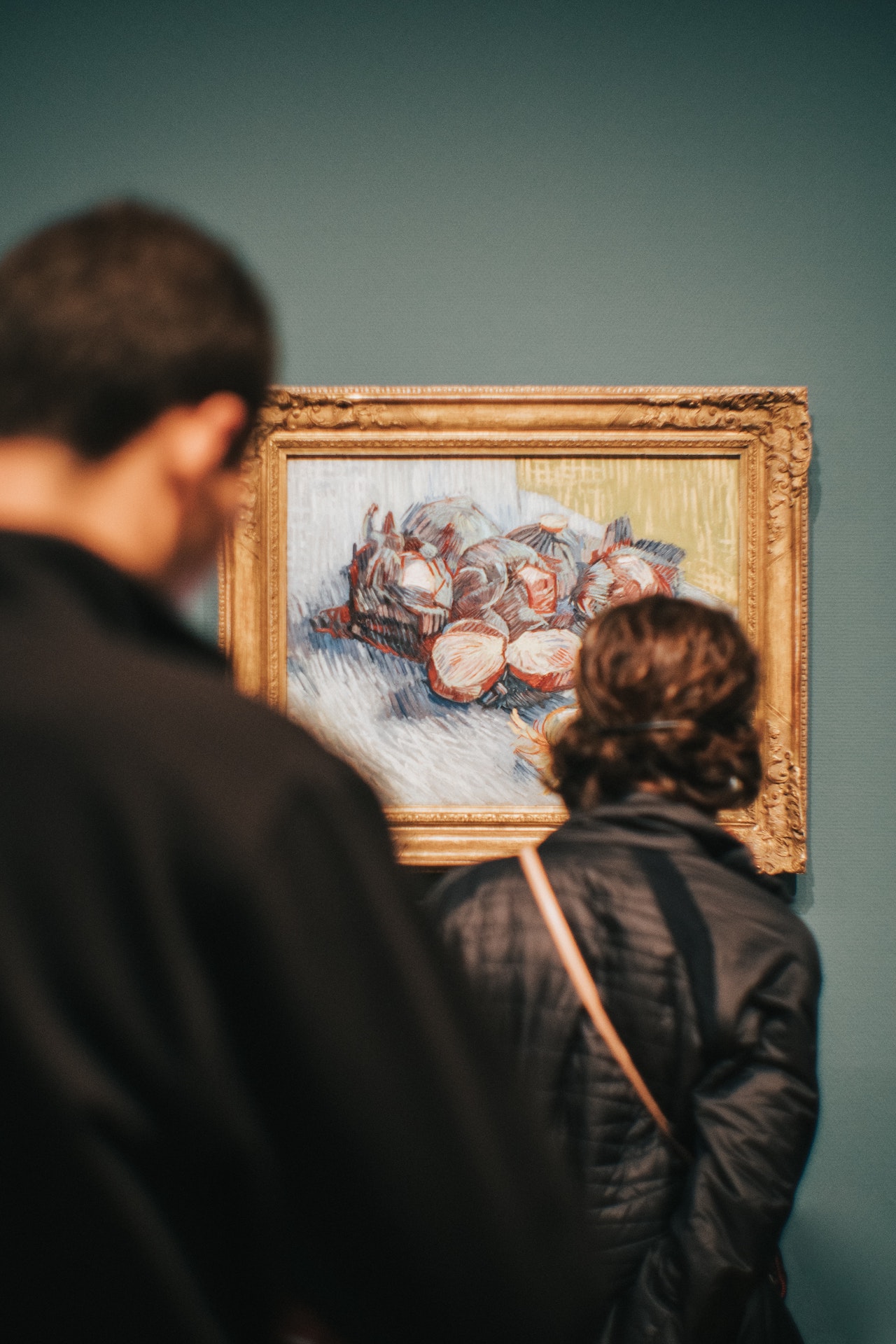
Blockchain is also facilitating fractional ownership, allowing buyers of art to own part of a work along with other people. In 2018, Maecenas sold 31.5% of a tokenized work, Andy Warhol’s 14 Small Electric Chairs (1980), for $1.7m, becoming the first company to do this. The sale legitimized the approach as a viable way for more people to enter the fine art market to enjoy access to masterworks, and the possibility of actually seeing a meaningful return on fractional investments.
In the same year, artist Kevin Abosch sold a crypto-based piece titled Forever Rose to a collective of investors who paid with the equivalent of $1 million in cryptocurrency. Buyers each received one tenth of a virtual rose as a blockchain token. This event took fractional ownership to the next level by hosting the art itself within the code..
In addition, blockchain now allows for the authentication and seamless sale of unique digital and video art, both of which have been historically criticized as being too easily reproducible to make them truly collectible. Now, when a digital artwork is registered on a blockchain platform, data like its copyright, provenance, and specifications are recorded in a digital ledger, which is unalterable and accessible to all thereby securing the work’s authorship. As demand grows for these digital art mediums, blockchain will be essential to their product experience. And marketplaces like Makersplace and the new Nifty Gateway will likely grow in popularity.
Reimagining the art world
It is thrilling to be part of this generational shift in the art world. As the world opens up to more digital experiences, and more people find an appetite for and comfort with purchasing one-of-a-kind artworks online, technology will make it even easier for the art world to grow into new markets and challenge the status quo.
Younger generations who have grown up surrounded by the technologies and are just now entering the art world will not see this as evolution but as a natural extension of the world they know. New tools applied in thoughtful ways, combined with human curatorship and immersive event design, puts us in a great position to meet the challenges and opportunities of art’s future.
Jeanne Anderson is Senior Vice President and General Manager at Saatchi Art, the world’s leading online art gallery that has democratized the online art space for artists, globally. At Saatchi Art, she is responsible for leading the online marketplace and international art fair businesses – expanding the fair to new markets such as Chicago and Dallas within the last two years. Additionally, under her leadership, Jeanne and team have integrated new innovative features to the mobile Saatchi Art app such as various augmented reality functions. She has spoken at SXSW 2019 on How Technology is Transforming Art Collecting and is actively involved in programs committed to advancing women in tech via networking and mentoring support. Her work has been highlighted in Domino, LA Weekly, Next Reality, and Business News Daily. Jeanne has more than 20 years of experience overseeing e-commerce and marketplace businesses and previously served as Senior Vice President of Product Marketing and Optimization at ZipRecruiter where she focused on the expansion of its consumer brand strategy. Jeanne and her family currently reside in Los Angeles.
© YFS Magazine. All Rights Reserved. Copying prohibited. All material is protected by U.S. and international copyright laws. Unauthorized reproduction or distribution of this material is prohibited. Sharing of this material under Attribution-NonCommercial-NoDerivatives 4.0 International terms, listed here, is permitted.
